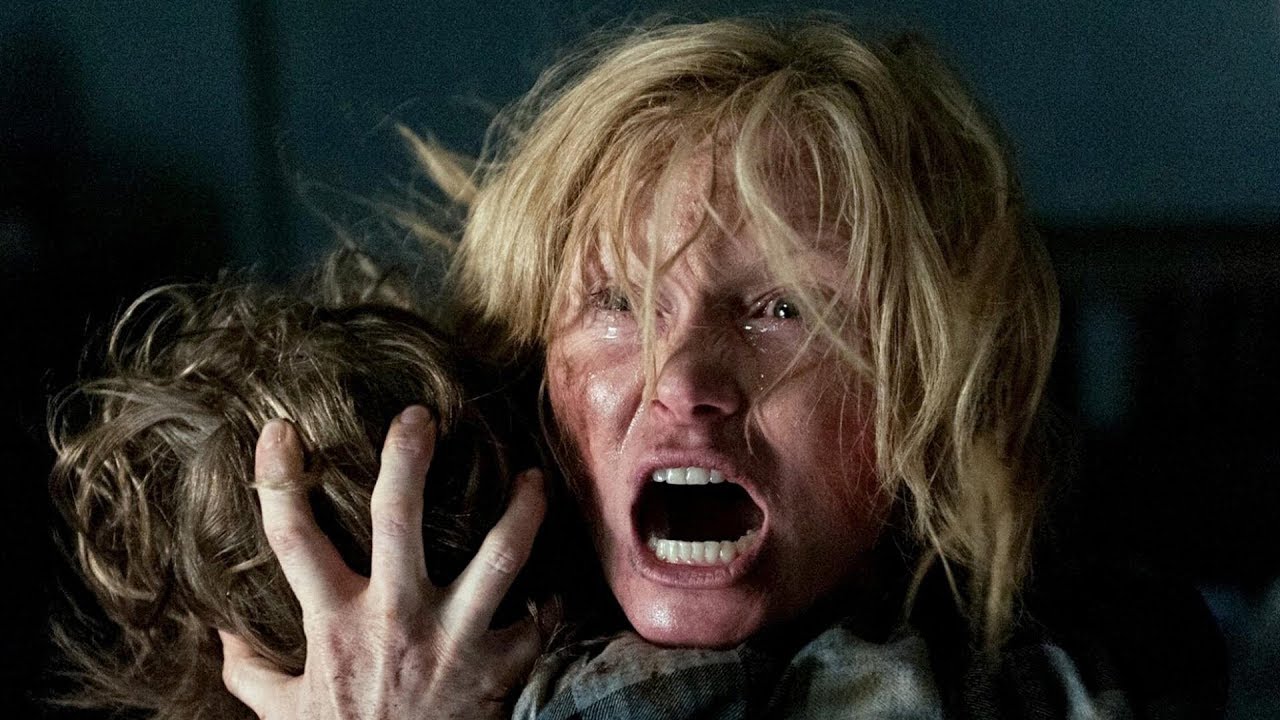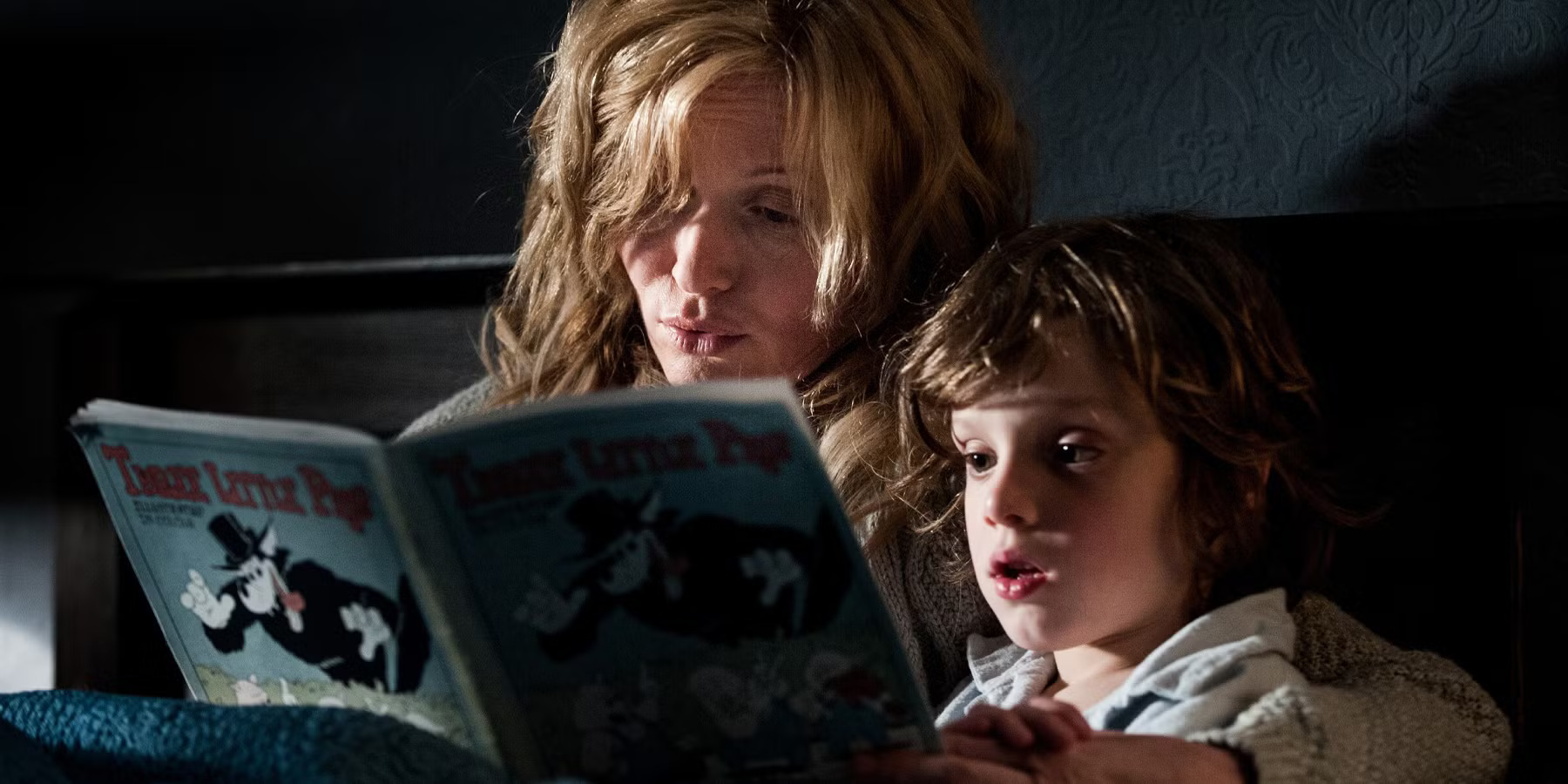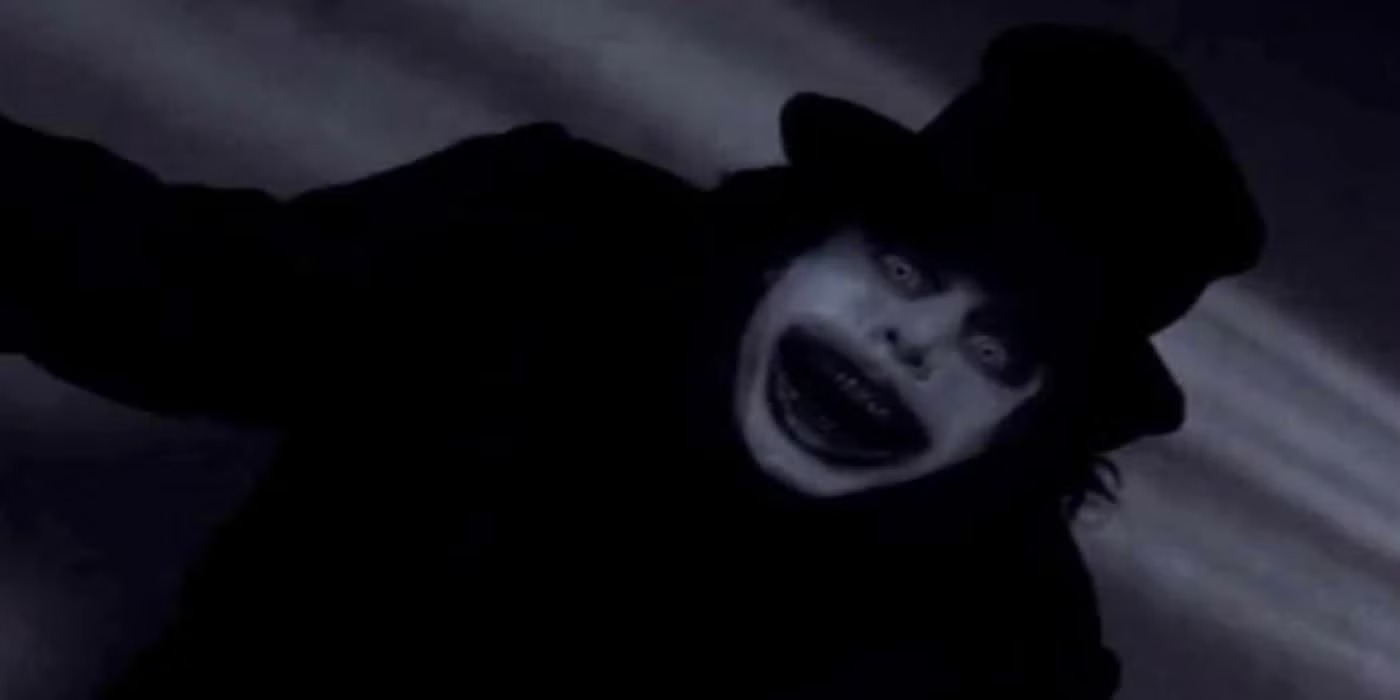Jennifer Kent’s The Babadook celebrates its 10th anniversary this year, showcasing its lasting appeal as both a chilling horror movie and a profound exploration of trauma and grief. Since its 2014 release, the film has become a cornerstone of the “elevated horror” genre, praised for its layered storytelling and symbolic richness.
Featuring standout performances by Essie Davis as Amelia, a single mother burdened by loss, and Noah Wiseman as her emotionally troubled son Sam, the film employs a supernatural framework to examine deep psychological themes. With its anniversary re-release by IFC Films, audiences have a fresh chance to rediscover this modern classic and its enduring resonance.
At its core, The Babadook tells the story of Amelia, a widow haunted by the death of her husband, Oskar, who died en route to Sam’s birth. Struggling as a single parent, Amelia faces the daunting task of raising a son with behavioral challenges while suppressing her unresolved trauma. Their lives take a terrifying turn when Sam discovers a sinister pop-up book, Mister Babadook. The titular creature soon manifests as a horrifying presence, embodying Amelia’s suppressed emotions and spiraling mental state, pushing her to confront the pain she has long ignored.

The Symbolism of The Babadook: Grief and Trauma Embodied
The Babadook itself serves as a potent metaphor for Amelia’s unacknowledged grief and repressed emotions. The creature’s black suit mirrors Oskar’s attire, linking its presence to his death. The basement, where Amelia stores Oskar’s belongings, becomes the monster’s lair, symbolizing the emotional baggage she avoids confronting.
The recurring message, “You can’t get rid of the Babadook,” underscores the film’s central theme: grief cannot be eradicated but must be managed. This poignant metaphor resonates deeply, making the film a powerful exploration of the human psyche.
As Amelia’s mental state deteriorates, the Babadook’s influence grows, pushing her into a terrifying spiral. Possessed by the creature, she exhibits violent and erratic behavior, endangering both herself and Sam. These moments serve as a stark representation of how unprocessed trauma can consume and destabilize individuals.
The film’s climactic struggle—where Sam restrains his mother and helps her expel the monster—marks a turning point. This sequence not only heightens the horror but also highlights the need for familial support in overcoming psychological struggles.
In a striking resolution, Amelia and Sam confront the Babadook head-on, choosing not to destroy it but to confine it to the basement. This act symbolizes their decision to acknowledge and manage their trauma rather than deny its existence. Amelia’s care for the creature, feeding it daily, reflects the ongoing process of healing. By tending to their emotional wounds instead of ignoring them, mother and son find a way to coexist with their past, embodying a profound message about the nature of grief and recovery.
The Babadook’s universal themes transcend its specific narrative, making it a relatable exploration of human emotions. It uses horror to externalize internal struggles, transforming personal grief into a tangible monster.
The film resonates with audiences who have faced loss, trauma, or depression, offering a cathartic depiction of these experiences. By grounding its supernatural elements in psychological reality, The Babadook elevates itself from traditional horror fare, blending genre conventions with poignant commentary on mental health.

Interpretations: Real or Imagined? The Babadook’s Dual Nature
The ambiguity surrounding the Babadook’s existence invites varied interpretations. Some argue that the creature represents Amelia’s psychological breakdown, manifesting as hallucinations and delusions. Evidence such as Amelia’s past as a children’s book author supports this theory. However, the film resists reducing the Babadook to a mere figment, maintaining its presence as a literal and metaphorical entity. This duality enriches the narrative, emphasizing the universality of trauma while preserving the tension and mystery central to its horror.
Despite its grim subject matter, The Babadook offers a hopeful conclusion. The film portrays Amelia and Sam’s ability to coexist with their trauma, illustrating the power of acknowledgment and active management. Their shared effort to control the Babadook signifies growth and resilience, showcasing the importance of family support in overcoming emotional challenges. The ending’s balance of fear and acceptance mirrors the complexities of real-life healing, making it a resonant and satisfying resolution.
The Babadook continues to influence the horror genre, cementing its status as a masterpiece of elevated horror. Its blend of psychological depth and traditional scares has inspired a new wave of filmmakers, redefining what horror can achieve. The film’s exploration of grief and mental health remains relevant, ensuring its legacy endures. As audiences revisit this classic on its anniversary, its timeless themes and innovative storytelling remain as impactful as ever.
Ten years on, The Babadook remains a vital piece of horror cinema, celebrated for its innovative approach to storytelling and its profound exploration of human emotion. By using the supernatural to address real-world struggles, the film transcends genre boundaries, resonating with a diverse audience. Its themes of grief, trauma, and healing are as relevant today as they were a decade ago, making its anniversary re-release a fitting tribute to its lasting impact. For horror lovers and cinephiles alike, The Babadook is a reminder that some monsters, once faced, can lead to growth and understanding.



